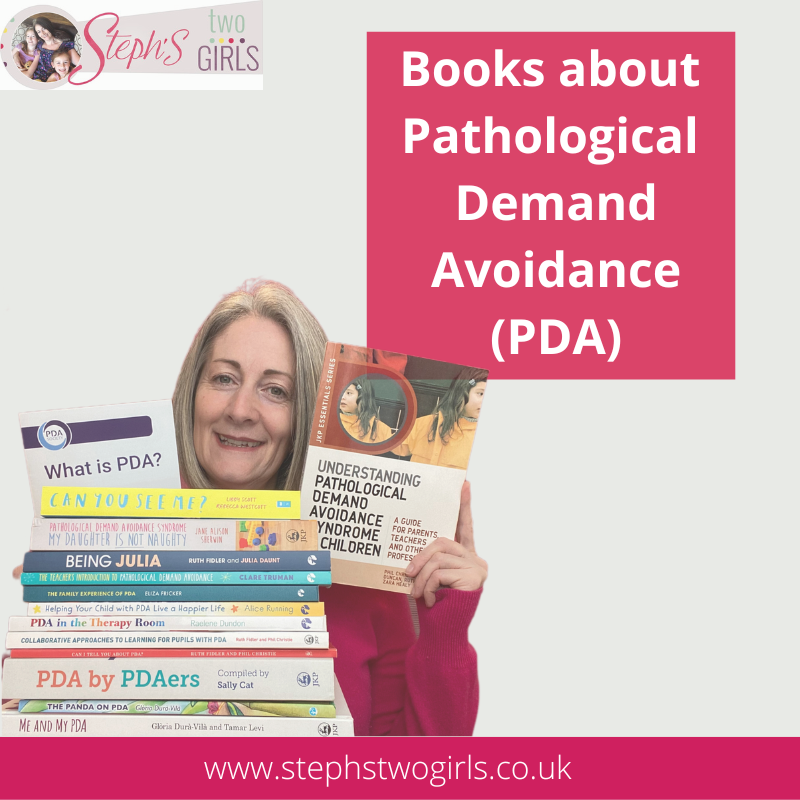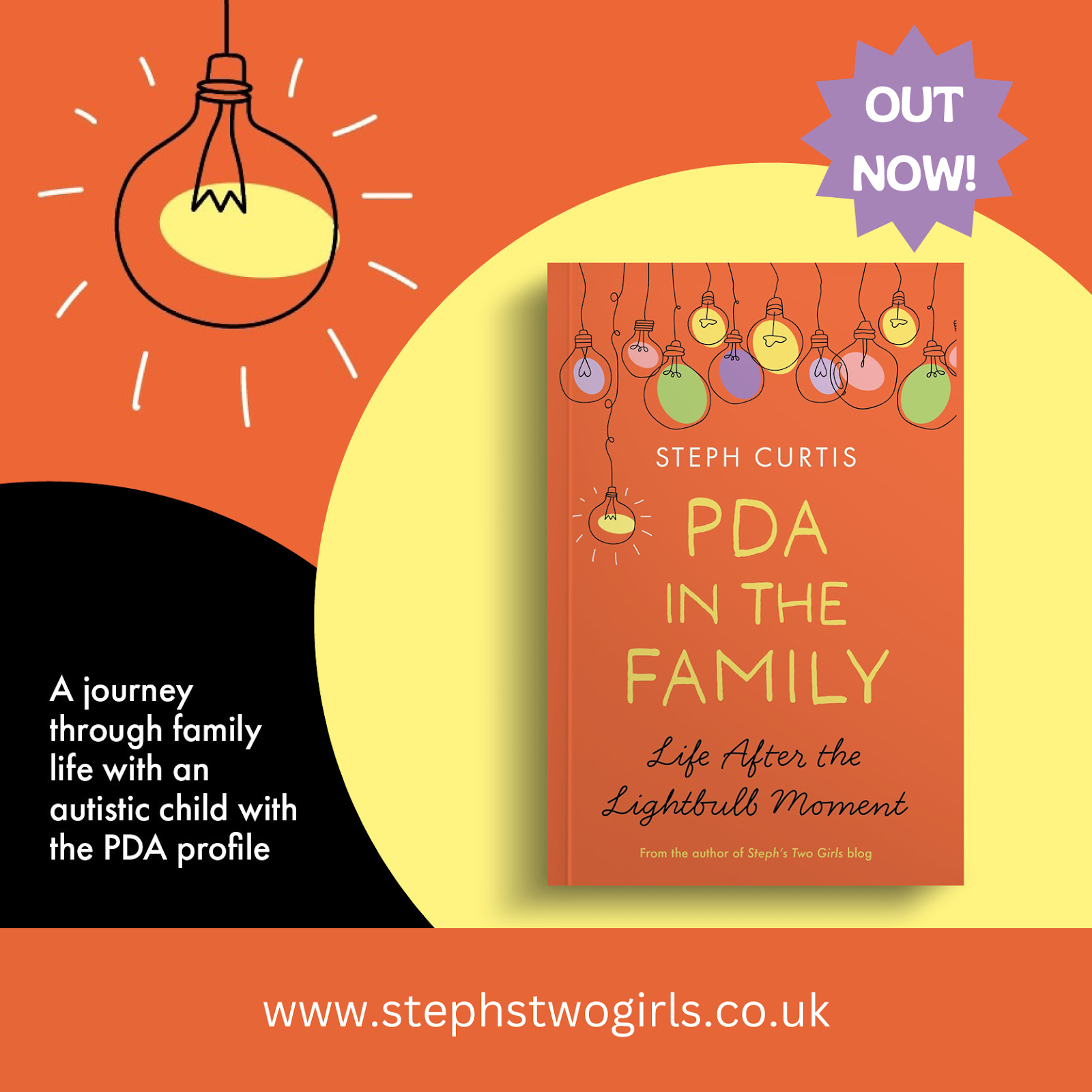Collaborative approaches to learning for pupils with PDA
Written by Ruth Fidler and Phil Christie, this book is a follow up to Understanding Pathological Demand Avoidance Syndrome in Children*.
The subtitle of this book is 'Strategies for Education Professionals', which means it has been written for those working with children with Pathological Demand Avoidance rather than for parents. That said, as a parent I still found it helpful; the book is littered with many examples of strategies which could also translate well to being used in the home.
One chapter which jumped out at me was 'Encouraging social understanding and promoting emotional wellbeing'. This covers various aspects common in PDA children such as them being perfectionists, which can often lead to low self-esteem and negative cyclical thoughts, as well as the whole way in which they can become fixated (in a good or bad way) with certain adults or children. Strategies are discussed and some visual options in the form of mind mapping and flow charts are given.
As happened to me with Ruth and Phil's first book, tears sprang to my eyes as I began to read this book. Honestly, it's like they've been in my house and understood our girl. I think it brings relief in a way; it highlights just how complex the situation is here on a daily basis and with that comes some acknowledgement that I am doing my best to hold things together all the time. Not just at times of meltdowns, but all the times before and after when I'm constantly planning to avoid those meltdowns and that distress. It is exhausting, there's no point denying that. This book, whilst not aimed at parents like me, is a support because it's proof of the kinds of strategies which need to be used every day - not because that's how we want to live, but because that is what works to enable our children with PDA to have the best life they can have.
You can order this book from Amazon here: Collaborative Approaches to Learning for Pupils with PDA: Strategies for Education Professionals*
PDA by PDAers
Compiled by an autistic adult (Sally Cat) who runs her own website and Facebook page, this book brings together many thoughts and viewpoints from a range of autistic adults who identify with the term Pathological Demand Avoidance.
This book is real lived experience from adult PDAers and I believe every parent should want to read this for a few different reasons. Ever since the first few weeks after diagnosis, I've always wondered about the future and what others' experiences were. As parents we are often told to not look too far ahead, and that nobody knows what the future will hold, and of course that's true. It helps though, to increase understanding of thoughts that may be going on, especially when you have a child who might not be quite so articulate due to their age and little experience of the adult world. It also helps to have hope in a future that is not all doom and gloom - there are successful adults out there with PDA, for sure.
Even the way the book has been compiled is fascinating - a real collaborative process, started with a series of questions in a Facebook group for adult PDAers. The responses are all republished as they were given, so it's almost like reading a huge conversation. The book is broken down into 20 chapters, covering issues from school and work to masking, roleplay, meltdowns, parenting, people and more. The book is interspersed with great graphic memes from Sally Cat herself, and writing from Riko Ryuki, an adult PDAer with three children also on the Spectrum; her blog is called Dragonriko and Facebook page Riko's PDA Page.
You can order this book from Amazon here: PDA by PDAers: From Anxiety to Avoidance and Masking to Meltdowns*
Me and My PDA
Written by Glòria Durà-Vilà and Tamar Levi, this book is unusual in that it is aimed at young people with PDA rather than those caring for them.
I was very excited about the arrival of this book and thankfully not at all disappointed when it arrived. It begins with a letter directly to the child/young adult, explaining that the book is for them and that they are in control of what they would like to do with it, and when they would like to read it. It explains that they know themselves better than anyone and so should decide for themselves how they'd like to use it. This is definitely playing into their hands, given that those with PDA tend to find great comfort in control!
The book is varied; at points it offers suggestions of what the writers have heard from other young people with PDA and it asks the reader if they feel that applies to them. It explores topics such as feelings, friendships and school, giving examples of how other children have felt in different situations. It then offers some strategies which may have helped those children - all presented in a way which might just plant a thought in a child's mind, or enable them to not feel so alone.
Losing control and the danger zone are terms used rather than meltdown and at the back of the book is a whole section leading the individual to write a summary of themselves (if they want to), the things they struggle with and useful strategies so that this can be shared with adults around them.
You can order this book from Amazon here: Me and My PDA: A Guide to Pathological Demand Avoidance for Young People*
I love this book and think it could be very helpful for some children. I'll have to be honest and say that although I'd much rather be writing this review from Sasha's perspective, the book is not something she will engage with... yet. PDA at it's finest! Please don't take that as a reflection on the book though; Sasha is not and has never really been a fan of books. Although she can read very well, probably even ahead of her age, she has almost always refused to if it is led or suggested by anyone else.
So at the point when I asked Sasha for her opinions on the book, she wasn't interested in looking at it or discussing it. Possibly because I picked the wrong time (it's very difficult to pick the right time though!) but also because she just has in her mind that she hates books, or reading pretty much anything which is not on a screen. Randomly we did hit on some success with printed material last year, when Sasha's Auntie bought her a subscription to The Week Junior magazine for Christmas. As a gift she wasn't thrilled with the idea, but as it started turning up on the doormat regularly it caught her eye and piqued her interest. Now she always opens it as soon as it arrives and scans for the articles which are of most interest to her (generally those about gaming or technology, or anything with pictures or short and humorous!).
* Amazon Affiliate links. If you use these or click on pictures to order, I will receive a small commission. Other good book retailers are available.
Our book, PDA in the Family, is out now! We wanted to help other people understand more about Pathological Demand Avoidance and the book was one way of doing that. It's an account of our family life since the day we were told our younger daughter is autistic. It covers diagnosis, the subsequent lightbulb moment we had when we heard about PDA, education, relationships and more.
To find out more about our experiences, please check out our 'About Us' page. If you are looking for more information on Pathological Demand Avoidance, the posts below may help.
What is PDA (Pathological Demand Avoidance)?
Ten things you need to know about Pathological Demand Avoidance
Does my child have Pathological Demand Avoidance?
The difference between PDA and ODD
Strategies for PDA (Pathological Demand Avoidance)
Pathological Demand Avoidance: Strategies for Schools
Challenging Behaviour and PDA
Is Pathological Demand Avoidance real?
Autism with demand avoidance or Pathological Demand Avoidance?
To follow me on other social media channels, you can find me at the following links or click the icons below!






























No comments:
Post a Comment
Comments are always very much appreciated and can really help the conversation go further...